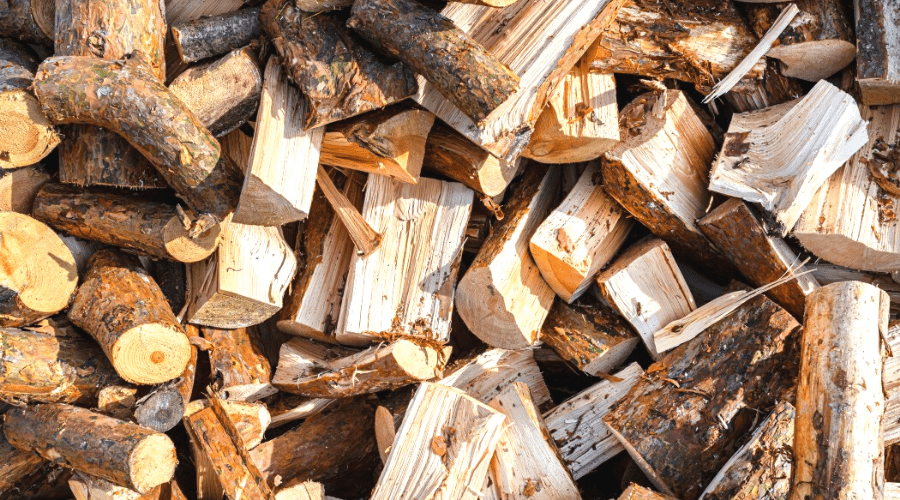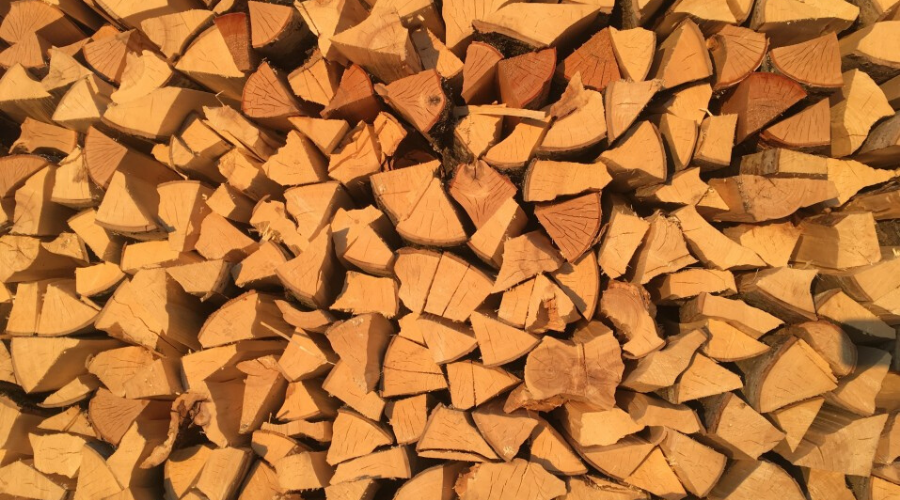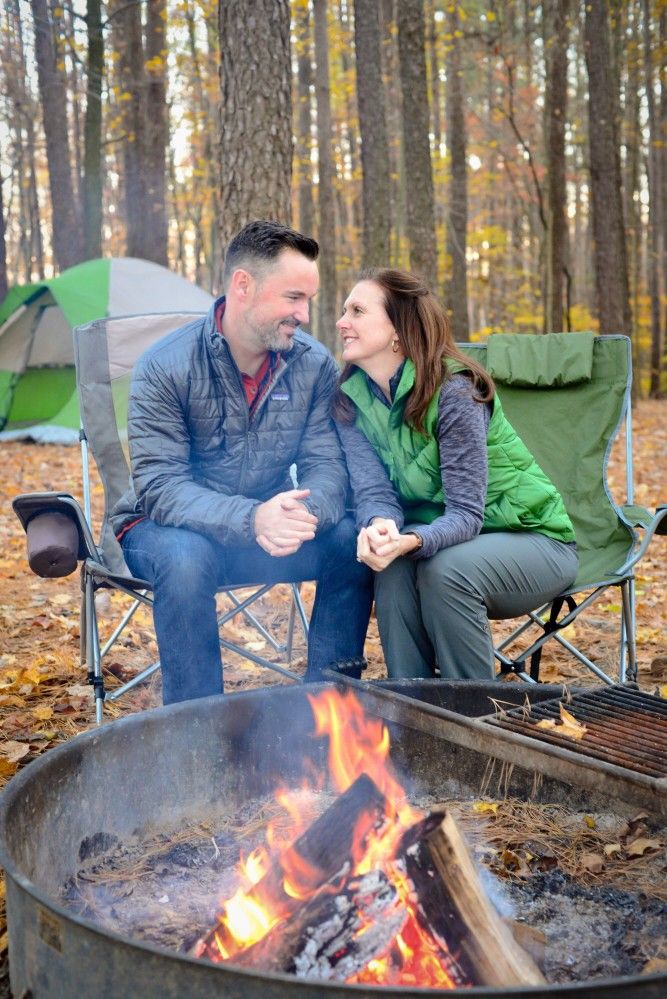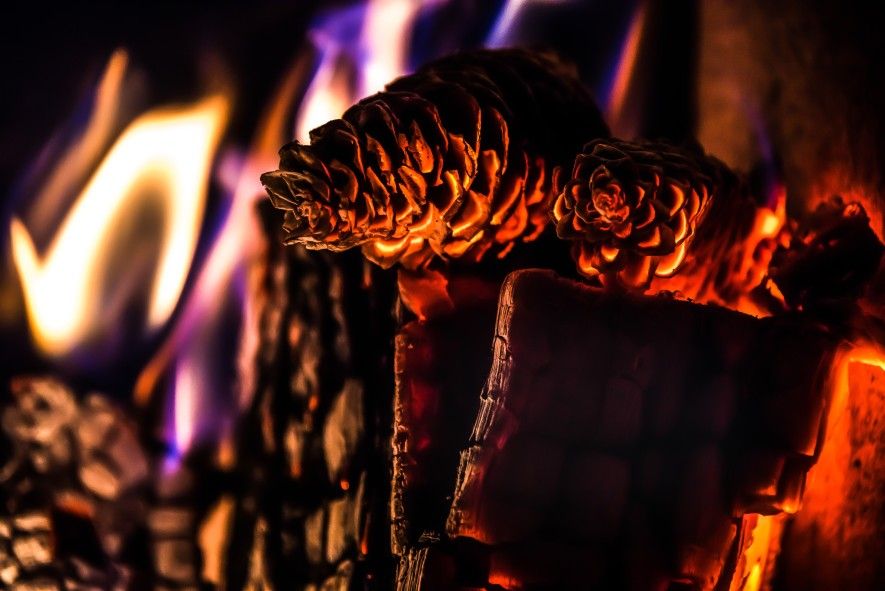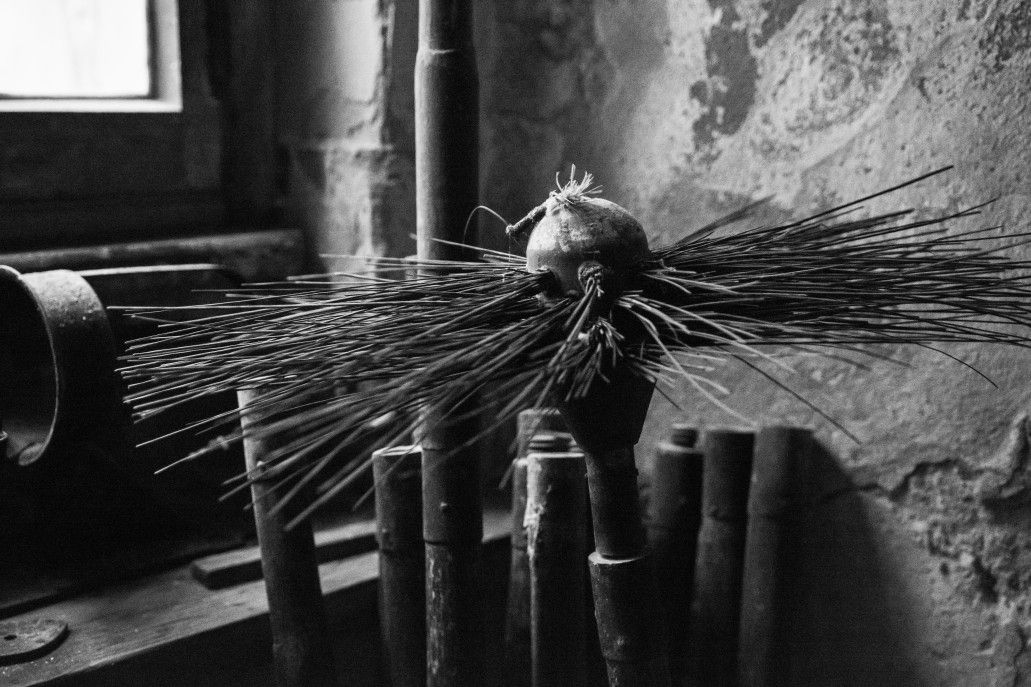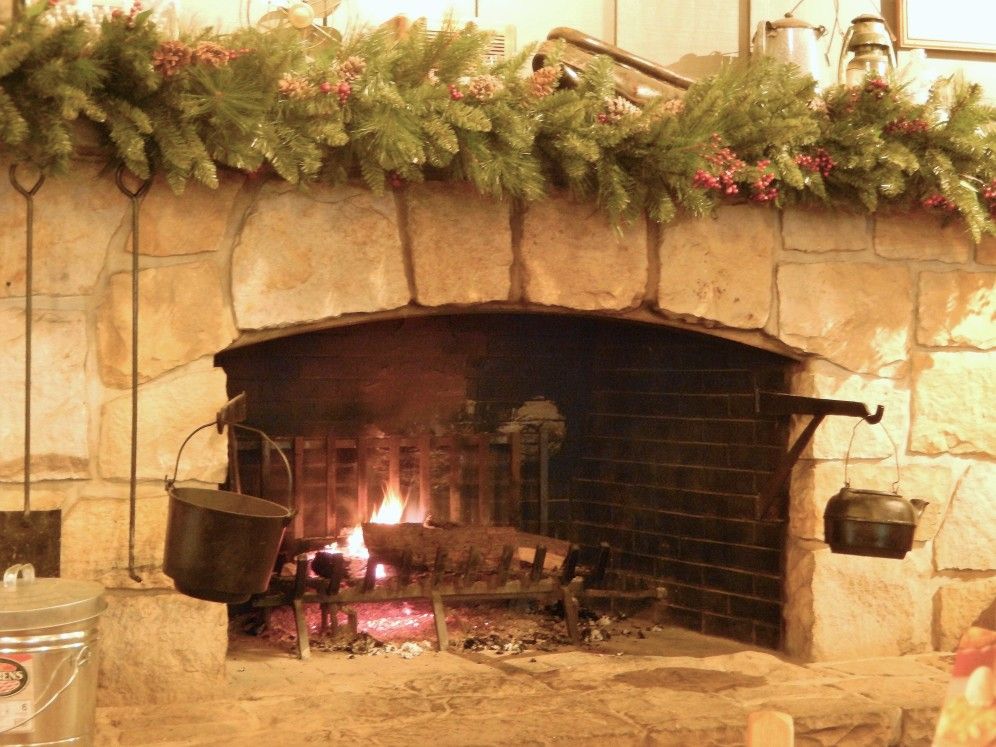If you've got a load of pinewood in the rack and are curious about whether it's good to heat your home, toss on the campfire, put in your smoker or if it's best left to the termites, you're in the right place. Here's everything you've ever needed to know about burning pine for firewood, all in one place.
Pine Firewood Details
BTU: 22 million per cord
Weight: 2936 lb (dry cord)
Seasoning Time: 6-8 months
Resin / Sap Content: High
Splitting Difficulty: Easy
Smoke: Heavy
Smell: Very pleasant
What Is Pinewood Used For?
During your lifetime, you come across pinewood more often than you think. It is a type of wood used in a variety of different situations, so we wanted you to know just how common it is and what it’s typically used for:
Pines are very common in the lumber and construction industry. They grow fast and are common in commercial plantations where they are planted specifically for being used for construction purposes. The timber that comes from these pines is stronger plan spruce and is often used to make furniture, roofing, and floors.
They are also used in the farming industry. It typically takes around 25 years to grow a pine plantation and, during this time, weaker trees (those with deformities, for example) are thinned to prevent them from using up the resources that help the other pines grow healthier (like sunlight and nutrients). These young trees are sometimes left in the forest or used for pulpwood, while older trees are exploited for saw timber.
They are also used as ornaments. You are very likely to find pines planted in parks or large gardens. Pine cones are an excellent resource for multiple types of crafts, especially Christmas-themed ones. Pine needles can be used to make pots, trays, and even baskets.
Pine Burn Qualities
However, the main topic in question here is what happens when you burn pinewood, so let’s explore that topic in depth. One first thing that we want to clear out is the fact that pinewood is indeed useful for outdoor fires because it generates a decent amount of heat and also has a pleasant scent to it. Even so, when it comes to burning fire in a fireplace or a stove, pine isn’t ideal as a primary wood type and, by the end of this section, you’ll likely understand why.
Wood varieties for burning are typically divided into the following three categories:
- Poor firewood for heating: This category includes pine, but also birch, soft maple, elm, sycamore, and other wood types.
- Good firewood for heating: In this category, you can find woods such as hard maple, black cherry, or black walnut.
- Excellent firewood for heating: The best woods for heating include mulberry, hickory, oak, ash, and others.
When you choose a particular type of firewood, there are six burn qualities that you have to pay attention. We wanted to talk about all six of them and see how pine performs in each of the following categories. This will shed more light on what it means to burn pinewood and watch are the advantages and drawbacks of actually setting it on fire.
Pine Firewood Heat Output
Pine's high smoke output makes it most suitable for outdoor use.
When you think about firewood use inside the house, that means you’re likely interested in its heat output because you’re going to use it as a primary source of fuel to keep your home warm. If you read the section above, then you already know that pine doesn’t do very well in this chapter and doesn’t have a decent heat output, so it’s can serve as heating fuel.
In fact, pine is one of the worst-performing types of wood when it comes to heat output and the numbers don’t lie. Much like in the case of radiators or air conditioners, we can measure the output using BTUs (per cord of wood) to determine pine’s efficiency as a heat source. When it comes to pine trees, the southern yellow pine is the variety that has the highest heat output but, overall, pine’s efficiency is about seven units lower compared to that of black locust, which is really good in terms of heat output (pine output is 22, black locust output is 29.3).
The conclusion here is that even the best type of pinewood performs really low at the heat output chapter and while this isn’t the only attribute you’re interested in when evaluating different types of firewood, it is surely one of the most important ones if you need wood to keep the house warm throughout the entire winter.
Smoke Output of Pine
Pine produces a lot of smoke, which makes it a champion at smoke output… which isn’t really what you want. The only other wood variety that can compare to pine in terms of smoke output is hard maple. Now, smoke is annoying and dangerous in a variety of situations. Imagine that you’re out camping for the weekend and you want to spend some time outside in the evening, b the fire. If you would use pine to start the fire, you’d be sitting in a heap of smoke that’s irritating to the eyes and throat.
Another thing that contributes to the smoke output of different types of wood is whether or not the wood is properly dried. Seasoned firewood is a great way around this problem (we’re going to talk a little bit more about the dryness of firewood in the upcoming sections).
Pine Firewood Smell
Probably one of the strongest attributes or selling points, if you will, of pine is its amazing fragrance. You have surely purchase or been around car or indoor air fresheners with pine scents. You might have even bought floor cleaning solutions that smell like pine. It has a very specific scent that makes burning pine a delight just because of that.
This is what makes pinewood a good choice for campfires: because it helps accentuate that forest smell and by burning it outside, you help prevent the danger of being exposed to creosote.
Pinecones burn readily, but beware of burning closed seed pods, which can spark when they burst open.
Sparks from Pinewood
Make no mistake: sparks are a hazard in certain conditions, which means that before you set any kind of wood on fire, you should first research its spark production. There are certain types of wood that pop up a lot and they pose a threat when these sparks can’t be contained. Even if we’re talking about lighting fires in special places (like inside the stove), the sparks can still damage the interior of the stove when they are too powerful.
It is always important to know how much spark a type of wood creates even when you’re burning it outdoors because the sparks can land on dry twigs, for instance, and cause a fire. If you have an open fireplace, they could land on the rug or some piece of untreated wooden furniture and it only takes a second of looking away to end up in the middle of a house fire.
Pine does really well at this chapter, meaning it doesn’t produce a significant amount of sparks, but that doesn’t mean that you should leave an outdoor pine fire unattended because some sparks will still be there. In fact, just for everyone’s safety, keep an eye on outdoor fires no matter which type of wood you’re burning.
Pine Firewood Coal Production
Firewood can also be rated based on a factor known as coaling. Every type of wood results in coal production after burn and the coal resulted from the process will influence the longevity of the fire itself. What does this mean, exactly? It means that if you choose firewood that can produce a larger amount of coal, that coal can keep the fire burning for longer, which makes that type of wood more efficient for overnight fires and for heating up the house.
Another positive outcome for generous coal production is the fact that it will be way easier for you to restart the fire in the morning because the embers will still be burning and all it takes is adding some more dry wood over time to start a roaring fire once more.
Pine is terrible when it comes to coal production and it is, by far, one of the worst wood types to burn if you want a consistent overnight fire. However, it does make it a good type of wood for outdoor fires because it will burn out quite fast and you won’t have to stay up for too long to supervise it. When it comes to heating a house, it’s just a bad option overall.
What Is Creosote?
Creosote needs to be cleaned from a frequently used chimney at least once per year.
There is the very important aspect of how burning pine creates creosote and we have to talk about it further. Something that a lot of people may not know is that all burning wood creates creosote but there is this whole controversy surrounding the idea of burning pinewood in your stove or fireplace. While you will often hear talks about the dangers of burning wood, a lot of so-called experts fail to actually explain if and why burning pine is a hazard.
The firewood supply that you use to make a fire should be created of both soft and hardwoods, and that’s a fact. Hardwood is a good option because it produces more heat and burns for longer, but softwood is way better for igniting a fire faster. As a result, pinewood is a great choice for kindling a fire, especially if you have small branches or twigs at hand got this particular action.
But let’s talk about creosote a bit more. The first thing that you should know is that creosote is somewhat unavoidable when you’re burning wood. What is in your control is how much creosote you create depending on the wood combination that you use during a fire.
Creosote is actually a combination of tiny unburned particles found in smoke. As the fire’s smoke exits through the chimney, it creates a coat on the surface of the chimney. Pine is a softwood, and one of the properties of softwoods is that they cause the smoke to travel faster because they make hotter fires, thus leaving less time for condensation.
The key to having a decent level of creosote is to use dry firewood (“dry” means that it’s at least six months old or it comes with around 20 percent moisture). Wet wood is a lot likelier to create smoke with higher amounts of creosote.
Creosote Build-Up from Burning Pine
We have reached the final consideration when it comes to classifying burning wood and it’s also one of the most important ones of all. Creosote is a direct result of burning wood and it is very important when it comes to lighting fires in stoves and fireplaces.
As a side product of burning wood, creosote will stick to the inner parts of your chimney and it is just like a black tar that’s a serious fire hazard. It can easily catch fire and pose a real threat, even if it isn’t dangerous when in small quantities.
Sappy types of wood are the ones most likely to create creosote build-ups, which makes pine a champion at creosote production. That makes it very dangerous in terms of creosote production if you want to ignite a long-lasting fire. Because of this, pinewood should never be used as the primary fire source, but is very useful for kindling a fire and helping get it started.
How Dangerous Is Creosote?
Creosote is dangerous for both your house and your health. It is a toxic compounds that can have several negative impacts on your body, including:
- Irritated skin and eyes – Coming in contact with creosote can cause skin reactions (such as rashes) or irritated eyes that lead to sensitivity in the light or the feel of chemical burn in your eyes.
- Respiratory problems – When you inhale creosote particles, you are likely to end up having breathing problems in time.
- Cancer – Creosote is a carcinogenic compound and long-term exposure to it may lead to cancer. However, a home chimney usually never ends up having such a huge amount of creosote as to be considered a threat leading to cancer (it is still, however, a problem that could lead to the other issues we spoke of above).
Let’s also talk about the danger of creosote from a different perspective: that of your home. I don’t know how many of you are aware of the fact that creosote built-up in the chimney is actually one of the leading causes of chimney fires all over the world. Creosote is highly flammable, so it’s really important to have it removed regularly even if you think that chimney is probably the safest place for a fire to be contained.
That is a misconception because chimneys are designed to aid in smoke elimination and are not actually built to withstand the tremendous amount of heat generated by a fire located on the actual surface. Typically, there no noticeable signs of damage after the first chimney fire, but its integrity will be compromised and it will not be able to handle a second one. Chimney fires can cause damage to the chimney lining up to a point where it needs replacement because it can no longer be repaired.
Conclusion
Let’s circle back to the main question: is pine firewood good? I guess it depends on what you plan on using it for. It is a reliable type of wood if you’re looking to make a campfire when you’re out in the woods and could surely make a nice atmosphere if you have an outdoor fire pit in your back yard. It is also useful for kindling a stove or a fireplace fire, but that’s about it. The large creosote production combines with the low heat output of pine make it a very weak source for an indoor fire. There are other types of wood out there that are way better when used to heat up the house.

